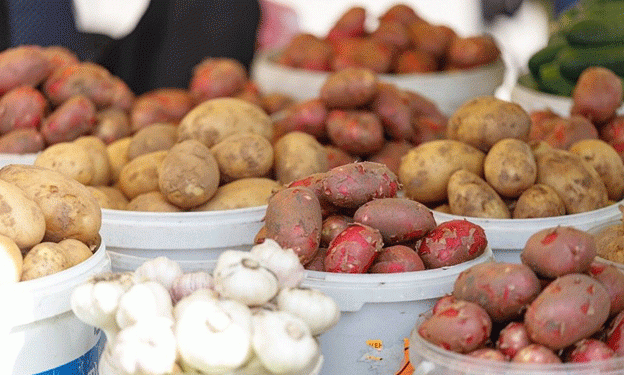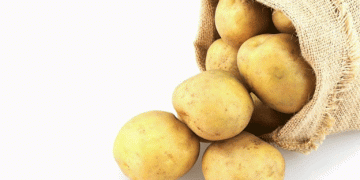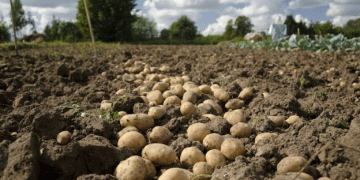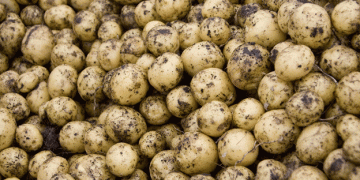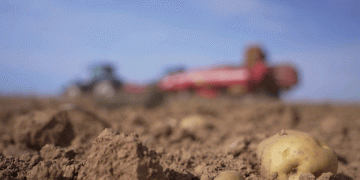In recent years, agricultural scientists have been exploring more sustainable and effective methods of protecting crops from disease, and a team of researchers at the Siberian Federal University (SFU) has made a promising breakthrough for potato farmers. The new treatment, which involves the application of a biodegradable biopolymer, has proven to significantly reduce the impact of common fungal diseases in potatoes, while also increasing yields by 5.6 tons per hectare.
This innovative method, which has been published in the Journal of Polymers and the Environment, targets some of the most persistent fungal diseases affecting potatoes, including Rhizoctonia, Alternaria, Phytophthora, and Fusarium. These diseases are particularly problematic during the sprouting phase and can delay growth, hinder development, or even cause plant death, resulting in significant yield losses.
How the New Treatment Works
The process begins with pre-planting treatment of potato tubers. Researchers at SFU and the Institute of Biophysics at the Siberian Branch of the Russian Academy of Sciences (SB RAS) developed a solution involving a natural polymer called poly-3-hydroxybutyrate (PHB) combined with the fungicide azoxystrobin. The PHB, produced by certain bacteria, acts as a protective “coat” or “film” that gradually releases the fungicide over time. This controlled release protects the potato sprouts and roots from fungal pathogens throughout the growing season.
One of the key advantages of this method is its efficiency. Unlike traditional practices, which require multiple applications of fungicide throughout the growing season, this new method only requires a single application of the biopolymer-fungicide mixture. This means that fewer chemicals are needed, reducing overall fungicide use and minimizing environmental impact.
As the biopolymer decomposes naturally in the soil, it breaks down into water and carbon dioxide, and the slow release of the fungicide ensures continued protection for the plants without the risk of overexposure. According to Professor Svetlana Prudnikova, the lead researcher, this approach is not only highly effective but also environmentally friendly, with over a decade of testing demonstrating its safety for the ecosystem.
A More Sustainable Alternative to Traditional Methods
This new treatment method represents a significant advancement over conventional potato protection strategies. Traditional fungicide treatments often involve multiple applications, which can be costly for farmers and may also contribute to environmental pollution. The biopolymer approach significantly reduces the amount of fungicide needed, thereby lowering costs for farmers while maintaining effective disease control.
The biodegradable nature of the biopolymer means that it is non-toxic and safe for the environment. The fact that it is naturally broken down by soil bacteria ensures that it does not accumulate in the soil or water, making it a much more sustainable alternative to chemical treatments.
Furthermore, the method’s versatility means it could also be used to control other pests, such as insects, that affect potatoes and other crops. Researchers are currently exploring how this biopolymer-fungicide technology can be adapted to control a broader range of agricultural pests and diseases.
Potential for Widespread Adoption
The researchers are also working on scaling up the production of poly-3-hydroxybutyrate to make it more accessible and affordable for large-scale agricultural use. Future developments aim to reduce production costs and integrate the biopolymer treatment into agricultural systems more widely. This could have a transformative effect on the potato industry, not only in Russia but potentially in other potato-growing regions across the world.
As interest in sustainable farming practices continues to grow, this innovative treatment could provide a model for other agricultural sectors, paving the way for new, eco-friendly methods of pest and disease management.
The new eco-friendly potato treatment developed by Russian scientists is a promising breakthrough for the agricultural industry. By reducing the use of chemical fungicides and providing effective protection against common potato diseases, this treatment offers a more sustainable and cost-effective solution for farmers. With the potential to increase yields and protect crops throughout the growing season, it could play a key role in advancing potato farming practices and promoting environmental sustainability in agriculture.
